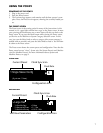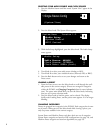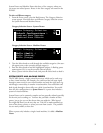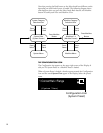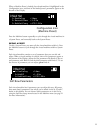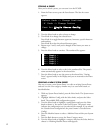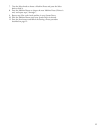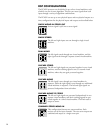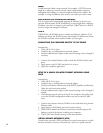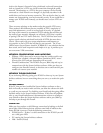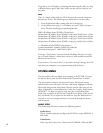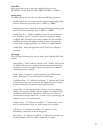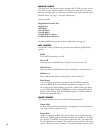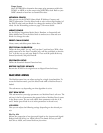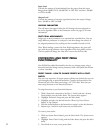15
NetWoRKING
This section provides a step-by-step guide on how to properly connect the
PCM92 to a Local Area Network (LAN) for several different network archi-
tectures. The first topology is a simple direct connection using the provided
Ethernet cable. The second method describes how to connect and config-
ure several PCM92 units to create an isolated network using an Ethernet
switch with static or with DHCP. This section concludes with some further
networking considerations and troubleshooting tips that will help with con-
necting to your PCM92 via Ethernet. If your application is more than these
simple examples we recommend that you involve a trained Ethernet network
administrator in the design and commissioning of your system.
Careful planning needs be made before placing a PCM92 on a network that
provides any access to the public. Some examples of public access are direct
access to the unit from the Internet, an unsecured or weakly secured wire-
less network, a network jack in a public area that provides network access to
the PCM92, or having a computer on the LAN that is not secured so that
someone could use it to reconfigure the PCM92. It is highly recommended
that the equipment be placed on a protected, isolated network that does not
have any connection to the public to prevent unauthorized users from recon-
figuring the unit. Please refer to the VPN portion of this section for more
information. Factory defaults for the Internet Protocol (IP) settings for the
PCM92 are as follows:
Auto-IP/DHCP Address: 169.254.x.x (where “x.x” is determined by
the PCM92 box numbers)
Subnet Mask: 255.255.0.0
Gateway: 0.0.0.0
DHCP Support: Enabled
oveRvIeW oF tcP/IP bASIcS
IP AddReSS
An identifier for a computer or device on a TCP/IP network. Each device
in a network has its own IP address to identify it. Example: 126.126.17.42.
Networks using the TCP/IP protocol route messages based on the IP address
of the destination. An IP address is made of four numbers separated by peri-
ods. Each number can be zero to 255. The last number should not be a zero
or 255. For example, 126.126.17.1 could be an IP address. 126.126.17.0
would not be a valid IP address. A TCP/ IP or IP address has two parts:
the NETWORK ID and the HOST ID. The NETWORK ID identifies
the network, and the HOST ID identifies either the subnet and device, or
just the device if there is no subnet. The subnet mask is a code that indi-
cates which part of the TCP/IP address is the NETWORK ID and which
part is the HOST ID. In subnet-mask code, 255 means “This part of the
address is the NETWORK ID”. Example: Suppose the IP ADDRESS of
a device is 192.168.xx.yy and the SUBNET MASK is 255.255.x.y. That
means, (192.168) is the NETWORK ID. The remaining set of numbers (xx.
yy) is the HOST ID. If your network stands alone (it is not part of a larger
network) then the HOST ID identifies each device in the network. If your
network is part of a venue’s larger network, your network is actually a sub-
network or subnet.



